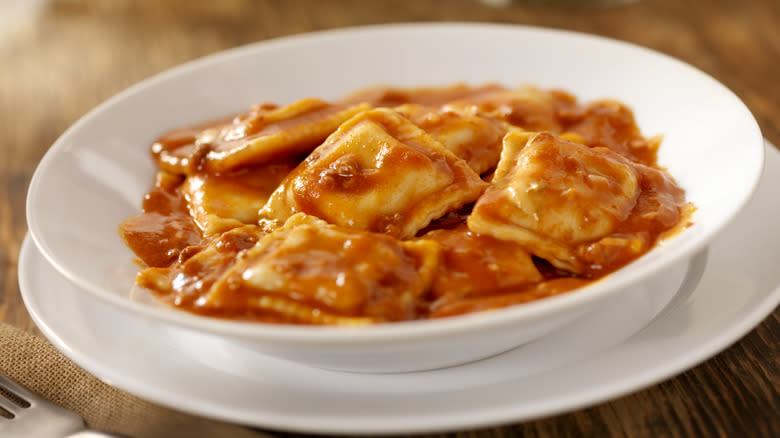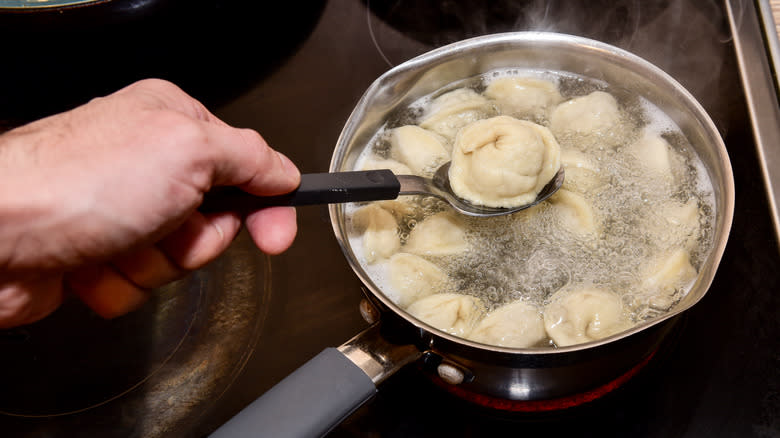Why Draining Your Ravioli In A Colander Is A Painful Pasta Mistake

While we're big fans of just about any saucy pasta, ravioli holds a special place in our hearts because of the surprise inside. The filling makes a simple dish of pasta and sauce seem like a complete meal whether it is cheesy, meaty, or a seasonal specialty like pumpkin. (Here's a homemade pumpkin ravioli recipe if you're feeling ambitious, although you might be able to find this item in the Aldi aisles come fall.) There's one trick to cooking ravioli that helps keep the filling where it belongs, and that's to skip the colander when it comes time to drain it.
The problem with pouring the whole pot of hot water, ravioli and all, into a colander is that this action will jostle the ravioli and may cause some of it to split. In fact, there's a chance that some of the filling could escape and be washed down the drain. Quelle horreur! In order to avoid this kitchen disaster, you should fish the ravioli out with a strainer, a skimmer, a spider, a slotted spoon, or any similar tool that starts with the letter "s."
Read more: 15 Mistakes Everyone Makes When Cooking Eggs
Going Colander-Free Also Lets You Save Pasta Water

Fishing your ravioli out of the cooking water a few at a time may slow things down (work quickly so the pasta doesn't get mushy) but does allow you to let the formerly-boiling water sit in the pot until it cools. This minimizes the possibility of splashing hot water on yourself as you pour it into the sink and risking the possibility of a painful burn. As a bonus, you can also save some of the pasta water to add to the ravioli sauce or use in other cooking projects.
No, we're not going to insist that you save every drop of water each time you make pasta, since how much kitchen space would you need to have in order for this to be feasible? Still, a tablespoon or two of starchy liquid can help to bind your sauces, as long as the pasta you cooked was of the standard kind and not a whole-grain, gluten-free, lentil-based, or other alternate variety. If you don't have the necessary room in the fridge or freezer to hang onto this batch, though, feel free to pour it all down the drain once you've removed the ravioli. After all, you can always make DIY pasta water on an as-needed basis by mixing a small amount of cornstarch and salt into tap water, then zapping it in the microwave. The resulting substitute will work exactly the same as the real deal.
Read the original article on Mashed

